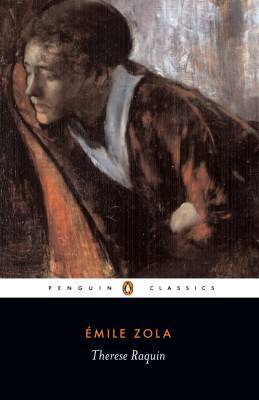Our book choice for February 2013 is Therese Raquin by Emile Zola. One of Zola’s most famous realistic novels, Therese Raquin is a clinically observed, sinister tale of adultery and murder among the lower classes in nineteenth-century Parisian society.
Thérèse Raquin is a novel by Émile Zola, first published in 1867. It is a dark and suspenseful story of passion, betrayal, and murder. The novel is set in Paris in the mid-19th century and tells the story of Thérèse Raquin, a young woman who is married to her sickly cousin, Camille. Thérèse is trapped in a loveless marriage and longs for passion and excitement.
One day, Thérèse meets Laurent, a handsome and virile man. The two of them are immediately drawn to each other and begin an affair. Their affair is passionate and intense, but it is also destructive. Thérèse and Laurent are consumed by their own desires and are willing to do anything to be together.
When Camille discovers the affair, he is devastated. He begs Thérèse to leave Laurent, but she refuses. In a fit of rage, Camille attacks Laurent, but Laurent is able to overpower him and kill him.
Thérèse and Laurent are now free to be together, but they are also haunted by the guilt of murder. They are constantly looking over their shoulders, afraid that they will be caught. Their relationship becomes increasingly toxic and they both become increasingly unstable.
Thérèse Raquin is a classic example of a naturalist novel. Zola was influenced by the work of Charles Darwin and believed that human behavior is determined by biology and environment. In Thérèse Raquin, Zola shows how the characters’ passions and desires are ultimately destructive. The novel is a powerful exploration of the dark side of human nature.
Here are some additional details about the novel:
- The novel is set in the Passage du Pont-Neuf, a real-life shopping arcade in Paris.
- The novel was inspired by a newspaper article about a murder that took place in the Passage du Pont-Neuf.
- The novel was first published in serial form in the magazine L’Artiste.
- The novel was adapted into a stage play in 1873 and a film in 1915.
- The novel has been translated into over 30 languages.
Discussion Questions
- Critics at the time of publication complained at the ‘pornography’ in the book. Do you think the manner in which sex is presented qualifies as pornographic? What function does sex, as written, perform?
- In his Preface, Zola offers extensive justifications for the novel as a response to critics of the time. Did you find his rationale credible? Do you think this book is a ‘scientific’ study of temperaments?
- Did you find the characters of Therese and Laurent believable?
- Was justice served? For all characters?
- Do Therese and Laruent feel guilt? Who was responsible for Camille’s murder?
- In what ways to Laurent and Camille represent the changes occurring within French society at the time of publication?
- How is the rule of law symbolically represented? What is Zola saying about the role of criminal justice as it pertains to the case of Camille’s murder?
- Is Mme Raquin in any way culpable for the murder and resulting complications?
- What do you think of Zola’s representation of women?
- How does Zola foreshadow the violence which occurs in the book?
- How do the protagonists treat death throughout the book?
- Can the events within the novel be expressed as a morality play, with sin at the centre of the unfolding narrative?
- Why is the book titled Therese Raquin?
Individual Ratings
DKB Rating 




Sue Rating 




Anthony Rating 




EmmaJ Rating 




Baljit Rating 




Miranda Rating 





